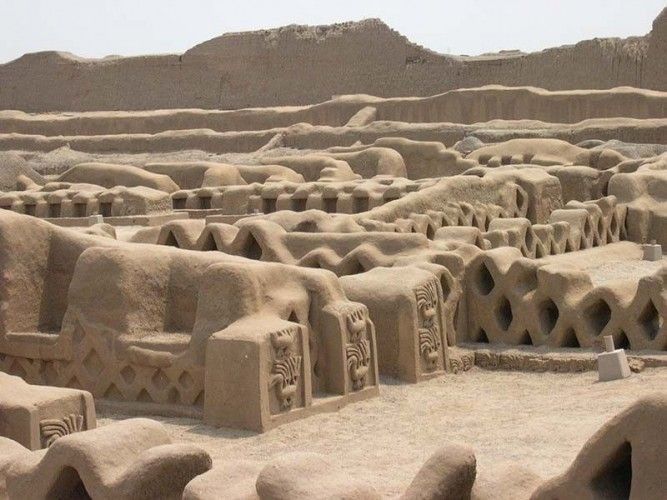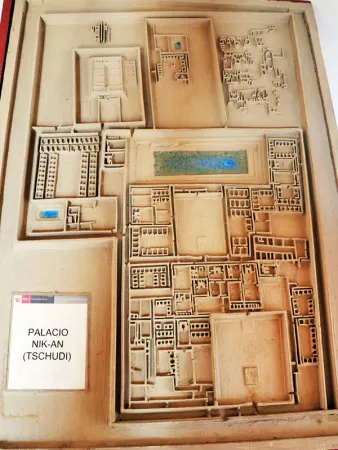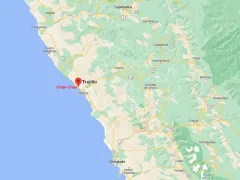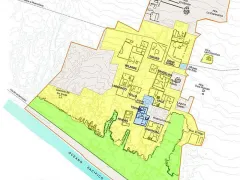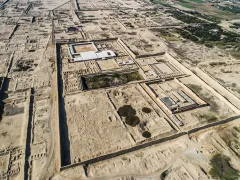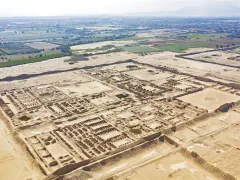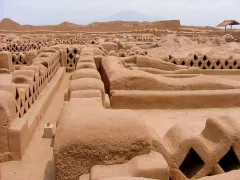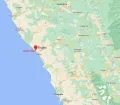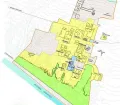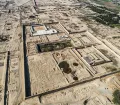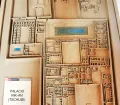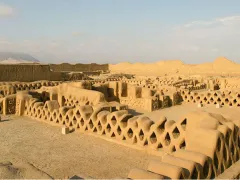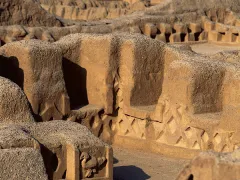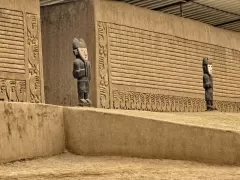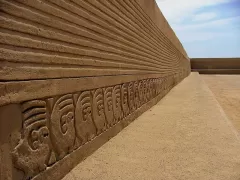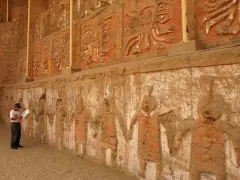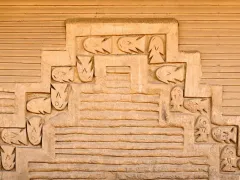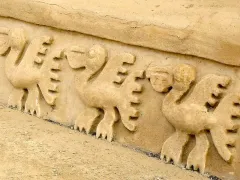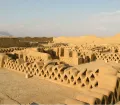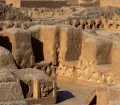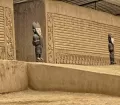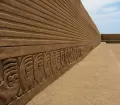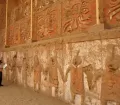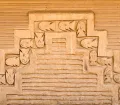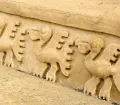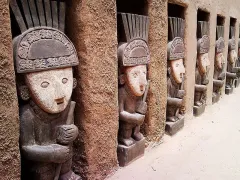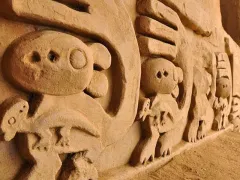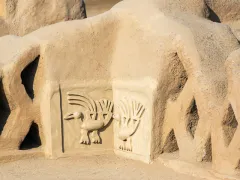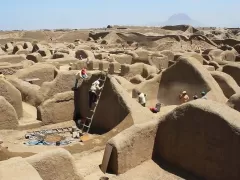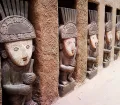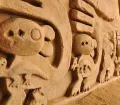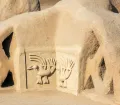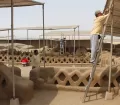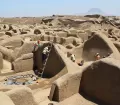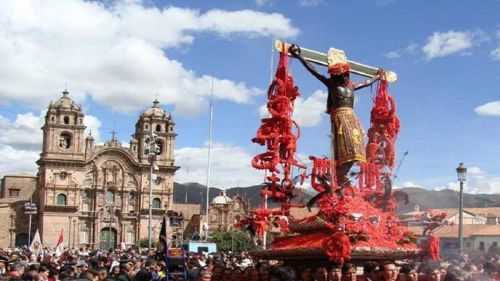Long before the famous Incas many other, very different cultures populated Peru and left us beautiful artifacts and amazing constructions. These are scattered all over the country and unfortunately, because of the popularity and breathtaking beauty of Machu Picchu, visited by nearly everyone that comes to Peru, often forgotten. One of these amazing cultures was the Chimú which emerged around 850 in northern Peru in the area of present-day Trujillo.
At its greatest expansion the Chimú Empire stretched from today’s border with Ecuador in the north along the Pacific coast to Lima in the south. By 1470, the Chimú were defeated by the Incas that expanded throughout present-day Peru, and perished. But the capital of the Chimú Empire, Chan Chan located just a few kilometers from Trujillo has remained to this day.
The largest pre-Colombian city in the Americas
At its height Chan Chan was the largest pre-Colombian metropolis on the American continent and the largest city in the world built of mud bricks (adobe). Only the city center of Chan Chan stretches over 6 sq km (2.3 sq mi), while the complete zone covers over 20 sq km (nearly 8 sq mi). In times of prosperity there were over 10,000 buildings and an estimated 30,000 to 60,000 inhabitants.
Although Chan Chan was built in the arid desert strip of the Peruvian coast, the extensive fields and gardens of the capital flourished thanks to a highly advanced irrigation system comprising various channels and wells. The planning and managing of this huge city reflect strong political and social structures.
Friezes, reliefs and carvings adorned the palaces
Chan Chan consisted of nine independent citadels or palaces. It is assumed that each palace belonged to one Chimú ruler; so they weren’t inhabited simultaneously but successively. The citadels were surrounded by huge walls and each had their own temples, ceremonial areas, grave chambers, water reservoirs, gardens, warehouses, buildings for the aristocracy, palaces, squares and streets. The temples and palaces were decorated with elaborate friezes, reliefs and carvings, some of them up to 50 m (165 ft) long. The walls surrounding each citadel were up to 15 m (50 ft) high and as well made of mud bricks (adobe). To get a smooth surface, the walls were additionally plastered with clay. Only the ruler, his entourage, the religious leaders and the aristocracy lived inside the citadel; the common people settled outside the palace walls.
After the Incas took power over the Chimú Empire, the capital Chan Chan lost of course all its influence, but the city remained intact and the inhabitants continued to live there and cultivate their fields. With the Spanish conquest a few decades later however the amazing city was first plundered and then left ravaged. A new city, present-day Trujillo, was built by the Spaniards just a few kilometers away.
Climate change, El Niño and salty winds threaten earthen constructions
Afterwards not much was left of the once great Chimú culture. Large parts of the former amazing metropolis have already disappeared and the few remaining adobe constructions are highly endangered. Climate change, the weather phenomenon El Niño which causes torrential rains and flooding, and strong, saline winds from the Pacific Ocean damage the vulnerable earthen structures and result in a seemingly unstoppable erosion.
Chan Chan is a World Heritage Site
Archaeologists try to save what is still savable with the scarce resources available and uncover more of the once largest pre-Colombian city in the Americas. Considering the sheer extent of the vast complex an almost impossible task. In 1986, Chan Chan was declared a World Heritage Site by the UNESCO. Fighting climate change, rising groundwater and illegal settlements the impressive archaeological site unfortunately ended on the Red List of World Heritage in Danger years ago.
Chan Chan is a unique testimony of the lost Chimú Empire. According to the UNESCO the city is a masterpiece of architecture and hierarchical construction displaying a political and social ideal which has rarely been expressed with such clarity.
Visitor Information for Chan Chan
Even though Chan Chan is a huge archaeological complex, please be aware that most of it unfortunately isn’t yet excavated and restored, rather eroding and waiting for hopefully better times. Some parts look more like a construction site where archaeologist try to save what’s left. Only a tiny part, the best preserved citadel called Palacio Nik An or Tschudi Palace (after the Swiss explorer) is open to the public. Nevertheless, visiting this amazing old city is more than worth the time and effort.
Within the complex is a lovely museum exhibiting objects found on site such as textiles and ceramics, as well as wooden and metal artifacts. Very interesting is the modern “computerized” room where with the aid of slides, light and sound effects the history of the Chan Chan culture is told.
How to get to Chan Chan
From Lima you can get to Trujillo by air, bus or car (distance from Lima to Trujillo approx.. 560 km (350 mi); an 8 to 9 hour drive). Chan Chan is located just a few kilometers west from Trujillo towards the Pacific Ocean. So you can either take a bus to and from the complex or a taxi. Many travel agencies in town offer tours to Chan Chan as well.
Visiting Hours
Opening hours: Tuesdays to Sundays from 09.00 am to 04.00 pm
Entrance fee: S/. 12 for adults; includes the visit of the archaeological complex, the on-site museum, the Huaca Arco Iris and the Huaca Esmeralda (Huaca del Dragon)
Guide: at the entrance a guide can be booked for S/. 30


